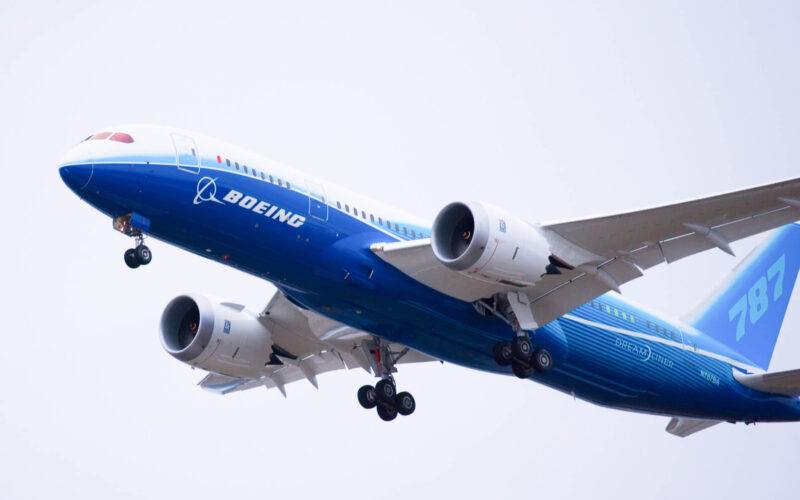Various production issues have bugged the Boeing 787 Dreamliner throughout the past year, resulting in the company suspending deliveries of new aircraft to customers. Now, as the manufacturer begins to amend issues found on the wide-body, the costs of doing so could potentially amount well into the billions.
The planemaker is beginning to mend various issues found in the 787 Dreamliner. The fixes, which could affect at least 88 stored aircraft that were manufactured throughout the year, are expected to set back the company hundreds of millions, potentially billions, of extra costs, reported Reuters, citing sources familiar with the matter. The sum could vary depending on the number of aircraft and the state of inspected 787s, the source added.
Currently, Boeing is looking to determine the scope of inspections on the aircraft and if the 787 can be operated without causing a potential safety issue. While Boeing fixed production problems that resulted in the skin of the fuselage being not as smooth as required, aircraft with the flaw were continued to be produced. The issue was first documented in August 2020.
The manufacturer has not delivered a single 787 since October 2020. In an earnings call to review Boeing’s 2020 results, the company’s President and Chief Executive Officer (CEO) David Calhoun indicated that the company was looking to restart deliveries in Q1 2021.
“However, it will be back-end loaded with no delivery this month and most likely very few, if any, in February. Also, based on what we know today, we still expect to deliver the vast majority of the 787 aircraft inventory by the end of the year,” commented Calhoun.
Boeing delivered only three 787s, one of its cash-cows, in Q4 2020.
Boeing 787 production issues
The inner fuselage skin smoothness was not the only problem the Dreamliner suffered throughout 2020. Shims, which are used to fill gaps when two fuselage panels are joined in assembly, were found to be improperly manufactured as well. While the shim and the fuselage skin issue on their own were of no safety risk, the combination of the two could have resulted in the fuselage not being able to withstand loads during a flight.
Another problem was found in September 2020. This time, the issue was related to the horizontal stabilizer of the aircraft, as parts of the horizontal stabilizer were clamped together with greater force than it was designed to.
As a result, the Federal Aviation Administration (FAA) began its investigation into the production shortfalls the same month.
Checking whether a Boeing 787 has the fuselage smoothness issue is a difficult and capital-intensive procedure that involves removing the interior, opening up floor panels, and measuring whether the flaw is present. The check is complicated by the fact that the engineering mishap is not visible to the naked eye.
If the flaw is found, technicians have to remove defective shims and install new ones, replace all fasteners, re-paint the area, and then re-install the interior. “It’s like open-heart surgery,” Reuters quoted a source familiar with the matter. “They’ll be retrofitting the fleet for potentially several years.”
In the latest, unrelated to the aforementioned issues, blow, the FAA mandated checks on 222 US-registered 787s. The agency identified that bilge barriers in the forward and aft cargo areas of the Dreamliner were either damaged or disengaged, as potentially, a fire in the cargo compartments “could result in the loss of continued safe flight and landing of the airplane.”
Furthermore, the FAA ordered Boeing to pay $6.6 million in fines to the administration. According to a statement issued by the FAA, the manufacturer failed to “meet its performance obligations under a 2015 settlement agreement.” Under the agreement, the two parties agreed that Boeing would “change its internal processes to improve and prioritize regulatory compliance.” The company had certain performance targets to meet, which it had failed to do on some of them, according to the FAA.
“Boeing failed to meet all of its obligations under the settlement agreement, and the FAA is holding Boeing accountable by imposing additional penalties,” said the FAA’s administrator Steve Dickson. “I have reiterated to Boeing’s leadership time and again that the company must prioritize safety and regulatory compliance, and that the FAA will always put safety first in all its decisions.”

